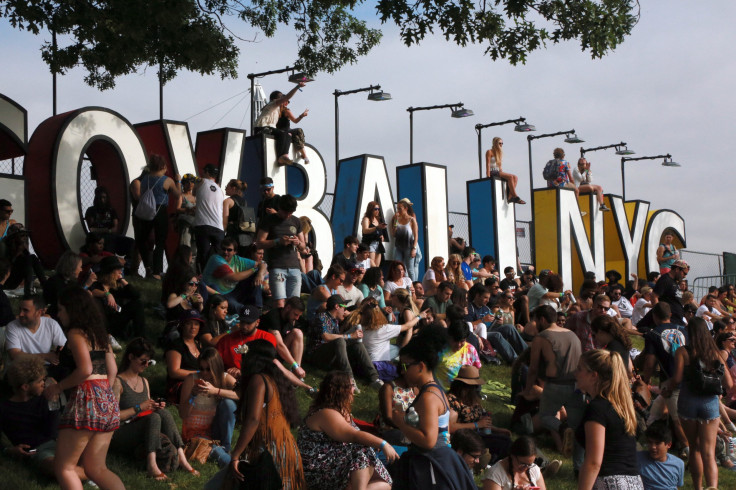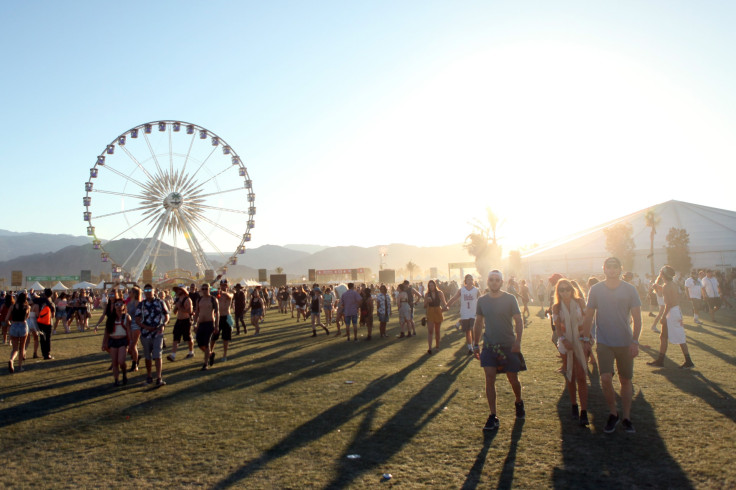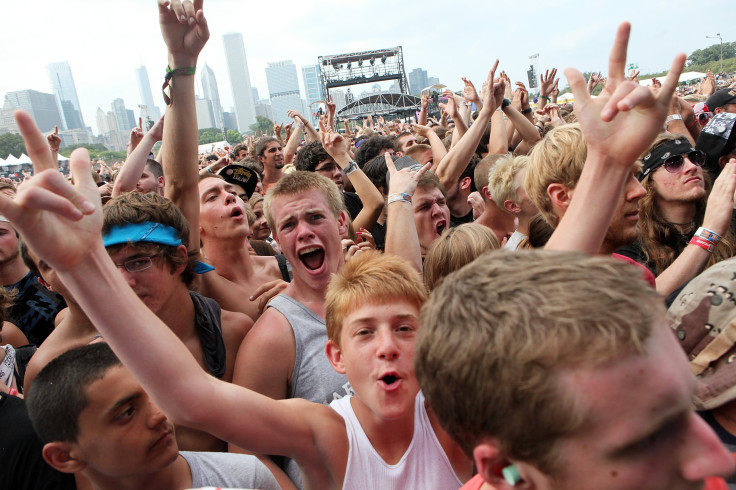Is There An East Coast Coachella? Music Festivals In Northeast US Face Unique Challenges For Success

The Coachella Valley Music and Arts Festival is so popular, festival organizers are doing it again next weekend. Since 2012, the landmark music festival that gathers 100,000 people in the desert of Indio, California, has been replaying the three-day event the weekend after its opening with an identical lineup of artists. Across the country, however, festivals aiming for the same level of success face more-complicated challenges.
Coachella is the undisputed king of West Coast festivals. The Midwest has Lollapalooza. The Southeast has Bonnaroo. However, in the Northeast, the logistics of a region dense with metropolitan areas, the challenges of establishing a unique identity and, of course, the weather, make it harder for any one festival to achieve the same level of dominance. Instead, the longest-running festivals in the region are those that have carved out a niche and a more targeted audience.
“These other festivals just want to be Coachella. I don’t think that is the way the universe of anything works,” Wes Jackson, director of the Brooklyn Hip-Hop Festival, told International Business Times. “You don’t just become Kobe Bryant. It doesn’t work like that. Those amazing things are built. When you look at it you go, ‘Oh, I’ll just do this and do that.’ And then you never know the actual details. There are a lot of little details and people you have to know and politics that have to fall right to do this.”
Jackson’s festival, entering its 12th year, brings together over 20,000 people each year to hear artists like Nas and Kanye West at Brooklyn Bridge Park.
“I think the reason we have been successful is the motivation behind it,” Jackson said. “The whole organization is hip-hop heads and junkies whose first goal is to keep the culture alive and keep the culture moving forward. When you have that passion and abstract concept to fall back on, it helps you to soldier through when real life punches you in the face, and from a business perspective, we have grown incrementally. We have not tried to hit the home run after one or two good years.”

Plenty of other festivals in the Northeast are also riding well-carved-out niches to long-running success. The Newport Folk Festival in Rhode Island has survived since 1959, making it the oldest music festival in the country, by keeping the scale small. It caps ticket sales at 10,000 and serves a dedicated audience of folk and indie rock fans.
However, many larger festivals have been a bit more aggressive in their efforts to conquer the East Coast festival scene. All Points West, produced by the same folks behind Coachella, set out to be that festival’s counterpart in Liberty State Park in Jersey City, New Jersey, but was undone by weather complications in 2010 after just two years of existence. The same goes for the now-defunct Field Day festival on New York's Long Island, which was also plagued by weather problems.
In recent years, the Governors Ball NYC Music Festival has emerged as the potential go-to festival on the East Coast. The festival, produced by independent Founders Entertainment, has gathered hundreds of thousands of concertgoers to Randall’s Island in its six-year history and delivered some of the biggest-name artists in the business. In a review for the festival’s five-year anniversary in 2015, Rolling Stone wrote: "New York's Governors Ball once again proved that it's the East Coast's only true great summer festival.”
However, with AEG Live bringing yet another festival to the city in 2016 — Panorama — Governors Ball now faces some stiff competition. The new event sports big-name headliners like Arcade Fire and LCD Soundsystem as part of a very similar all-things-to-all-people, general interest lineup. It will even debut in the same New York-adjacent location on Randall’s Island nearly a month before Governors Ball this year. Many Governors Ball fans and festival organizers petitioned the city to block the arrival of Panorama to no avail.
In addition to the competition, New York's urban landscape makes it nearly impossible to provide the kind of camping-based experience that is the signature of many major festivals like Coachella. The lack of opportunity to stay near the festival grounds, outside of famously expensive New York hotels, holds both events back from becoming the entire East Coast’s ruling festival, as opposed to simply New York's favorite fest.
“I think the basic reason for the struggle in New York is real estate,” Jackson said. “Bonnaroo is out on a farm in Tennessee. Coachella is out in the desert. Most of these festivals in the city, you don’t have the space to camp out and have 600 vans coming in. You can’t get those permits. Where are you going to put it? And then the community boards and the police. It is not as easy. The very nature of Coachella is, ‘We are far away from civilization.’”
The same problem applies to the Budweiser Made in America festival, held each year in Philadelphia. Despite financial success, cities prove a difficult place to establish a region-defining event. Jackson said the festival directors who have shepherded the decadelong success of Lollapalooza in Grant Park in Chicago are “superheroes.”

Firefly Music Festival, entering its fifth year in Dover, Delaware, where it steadily grew from around 40,000 people in its first year to more than 90,000 in 2015, looks a lot more like Bonnaroo or Coachella. Unlike many of its regional competitors, the four-day event is a full-on camping festival in a semirural location. That is no easy feat considering the region’s erratic weather — in 2015 the festival grounds had to be evacuated before a headlining set from rockers Kings of Leon due to a thunderstorm. Firefly billed itself as the “East Coast's Premier Music Experience” when it debuted in 2012.
"Every festival creates their own vibe and personality, and as we come off a sold-out festival in 2015 and head into Firefly’s fifth year, our fans and attendance have proved that the Firefly experience is a lasting one,” said Stephanie Mezzano, chief operations officer at Firefly Music Festival. “We're proud to be the largest camping festival on the East Coast and the largest glamping festival in the country. We look forward to continue producing Firefly as an East Coast staple."
An “East Coast staple” is a bit of walk-back from the festival’s initial “premier” tagline. However, Firefly has steadily doubled down on its unique aspects, especially camping, in an effort to solidify its identity. The “glamping” to which Mezzano refers is a style of luxury camping — the phrase is a portmanteau of glamour and camping — offered at Firefly entailing premium tents with electricity and access to showers. Firefly also works to make sure “the Woodlands,” its name for the wooded festival grounds, feels like an escape from civilization, providing distractions like a hammock hideout in the shade. However, in the battle to become an elite music festival, Firefly still faces one major hurdle.
“In the collective psyche, Delaware is not what you think of when you say ‘East Coast,’” Jackson said. “Technically it is, but it is kind of this random state at the end of the Jersey Turnpike before you get to Maryland. It doesn’t have any identity.”
To be fair to Firefly, Coachella, more than a two-hour drive from Los Angeles or San Diego, is also very much in the middle of nowhere. However, there are no questions about Coachella’s identity.
“Coachella is not saying they are the West Coast anything. That’s not their tagline,” Jackson said. “Coachella is Coachella.”
© Copyright IBTimes 2024. All rights reserved.






















